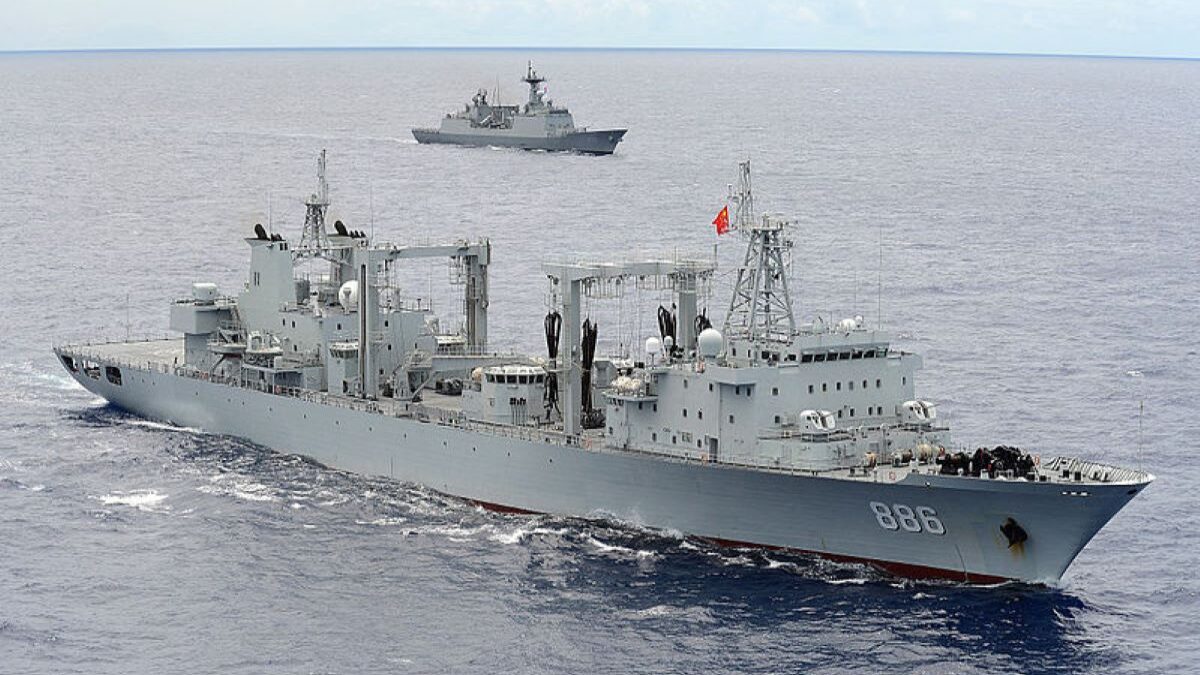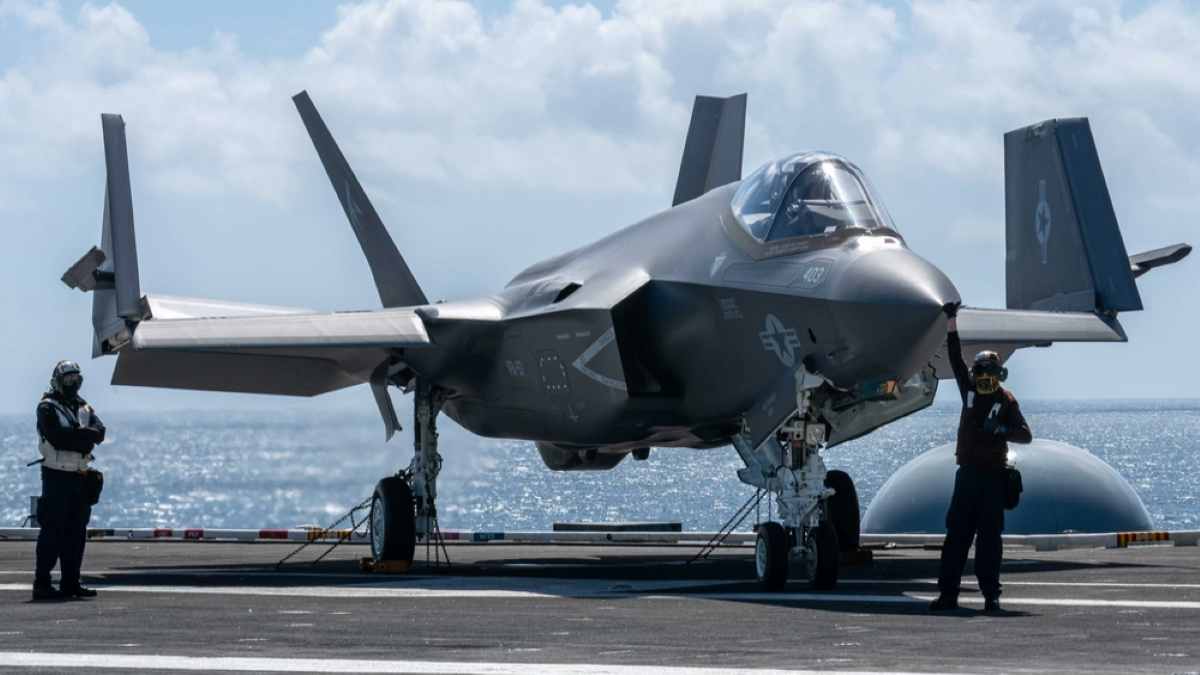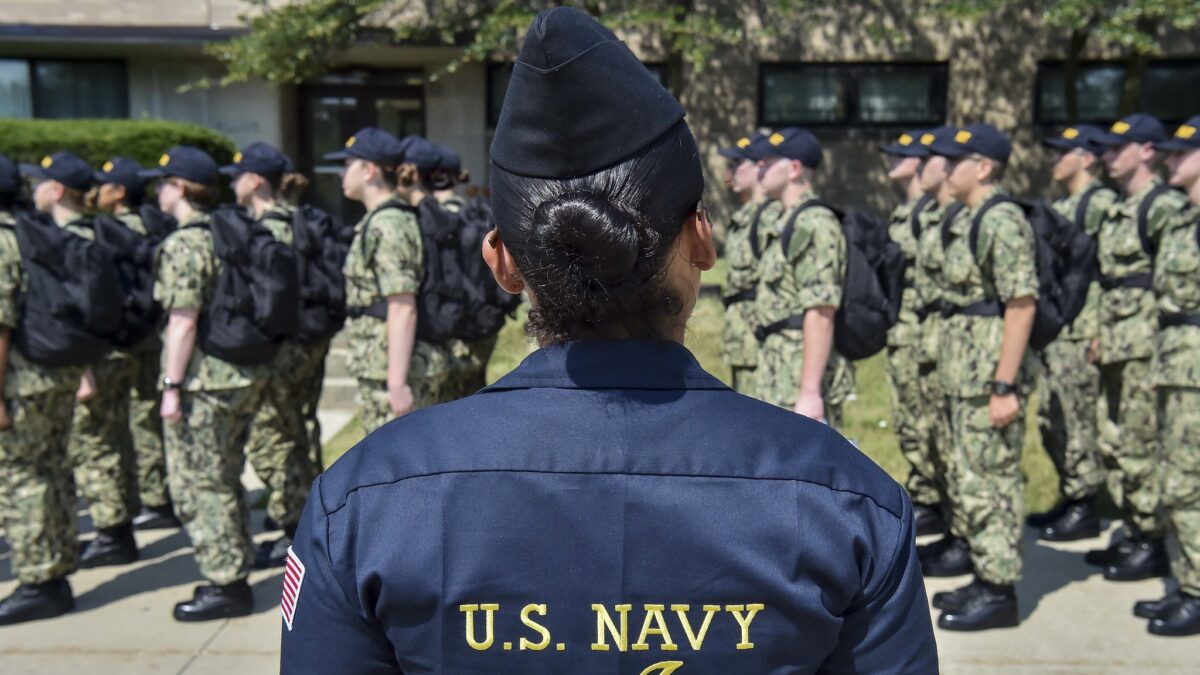It’s no secret Red China has spent the past several decades heavily investing in its armed forces. In a matter of decades, the People’s Liberation Army (PLA) has evolved into the largest military in the world, retrofitted with some of the latest and most advanced weapons systems.
Such developments have prompted Beijing to take more aggressive actions throughout the Indo-Pacific region in recent years. Just last month, a U.S. destroyer was abruptly cut off by a People’s Liberation Army Navy (PLAN) vessel during a transit through the Taiwan Strait. The incident occurred a few weeks after a Chinese fighter jet came within 400 feet of a U.S. reconnaissance aircraft while the latter was conducting a patrol of the South China Sea.
China has also made it a habit of conducting regular intrusions into Taiwan’s air defense identification zone and has, at times, carried out naval operations in the Taiwan Strait. Beijing has furthermore issued numerous threats to invade Taiwan if the island refuses to abdicate its sovereignty to the Chinese government. Taken collectively, these actions demonstrate growing confidence among Xi Jinping and the Chinese Communist Party in their nation’s military capabilities.
While the U.S. currently maintains its status as global hegemon, its ongoing naval challenges give Red China an opportunity to accumulate more power throughout the Indo-Pacific. Persistent failure to maintain a sizeable fleet and meet recruiting targets is hampering the Navy’s ability to fulfill its operations, which are necessary for upholding U.S. national security and peace throughout the world.
China’s Military Build-Up
Among the more alarming trends in China’s military rise is the rapid pace at which it has expanded its maritime fleet. On Tuesday, The Warzone published data from the Office of U.S. Naval Intelligence documenting how the growing disparity between the U.S. and Chinese fleet sizes is “being helped by China’s shipbuilders being more than 200 times more capable of producing surface warships and submarines.”
According to a May Congressional Research Service (CRS) report, Chinese efforts to modernize its navy have been underway for the past 30 years. As a result of such investments, the PLAN has evolved into a “much more modern and capable force,” giving it the ability to regularly operate throughout regional waters and expand its operations in the “the Western Pacific, the Indian Ocean, and waters around Europe.”
To date, the PLAN is the largest navy in the world, boasting approximately 340 ships compared to the U.S.’ 300. This disparity is only expected to grow in the coming years.
Meanwhile, the U.S. shipbuilding industry has been in freefall for decades, with ship retirements outpacing the production of new vessels. The Navy’s struggle to grow its fleet centers around a variety of factors, including a lack of a long-term vision, inconsistent budgeting, and manpower deficiencies. Naval experts warn that failure to address these issues will continue America’s atrophy as a leading maritime power.
Differences in Capabilities and Readiness
While the size of a nation’s naval fleet is significant, it isn’t the only factor used when comparing competing maritime forces.
According to Brent Sadler, a senior research fellow for The Heritage Foundation’s Center for National Defense, analyses of any state’s navy should also consider overall capabilities (i.e., sensors and weapon systems) and readiness, which includes the ability to maintain and sustain its ships and aircraft and train its crew.
“When you set two fleets, side by side,” it’s important to understand “their missions are different,” Sadler told The Federalist.
“[The U.S.] play[s] a deep-ocean, away game, and we need to have the ability to run strikes from [a] long range away,” he said. “We don’t have capabilities like that … We don’t have the long-range air-to-air missiles that we need … [and] don’t have the capability where we need it against the China threat.”
A series of war games conducted by the Center for Strategic & International Studies earlier this year found in the event of a military engagement with China, the U.S. would “likely” run out of key weaponry such as “long-range, precision-guided munitions — in less than one week in a Taiwan Strait conflict.” The simulation further concluded the U.S. is “not adequately prepared” for the current, global “security environment.”
In his remarks, Sadler described how China — while aspiring to become a dominant, global maritime power — has naval capabilities more suited for military conflicts near its coasts, adding that Beijing’s navy is “integrated with [its] air force and rocket forces [designed for] a near-sea campaign.” Bryan Clark, a senior fellow at the Hudson Institute, echoed similar sentiments, noting how the PLAN’s goal of maintaining dominance over regional waters has led to the development of a force more suited for local operations.
“The PLA Navy is much more weighted towards frigates, corvettes, and diesel submarines … than it is towards larger platforms like cruisers … aircraft carriers, or large amphibious ships,” Clark told The Federalist. “And that’s because they largely haven’t had a significant power projection mission. They’ve been mostly focused on defending [local] waters from outside forces.”
While such circumstances would present difficulty for U.S. naval forces seeking to breach the area in the event of a military conflict with Beijing, it also means the PLAN is not necessarily equipped to handle long, drawn-out sea campaigns far from its coastline. Unlike conflicts in the open ocean, nearby naval campaigns give the PLAN protection from land-based, surface-to-surface missile systems, according to Clark.
China’s fleet composition “creates these asymmetries where the PLAN is pretty strong if it’s at home [and] pretty weak if it deploys even beyond the first island chain, but certainly beyond the second island chain,” Clark added.
Regarding overall readiness, the U.S.’ dwindling fleet size and ongoing recruiting problems threaten to hamper its ability to respond to urgent crises. With fewer ships available, the Navy is forced to overuse its existing vessels, which means ships in need of regular maintenance are unable to acquire such repairs until another is available to take its place. Meanwhile, a lack of manpower necessary to maintain and run these ships means sailors are forced to work extra, leading to fatigue and potential accidents.
“Unfortunately, [this has] been the legacy of decades of atrophy in the U.S. Navy,” Sadler said.
Read Parts 1 and 2 of The Federalist’s breakdown of the biggest problems facing the U.S. Navy here and here.









